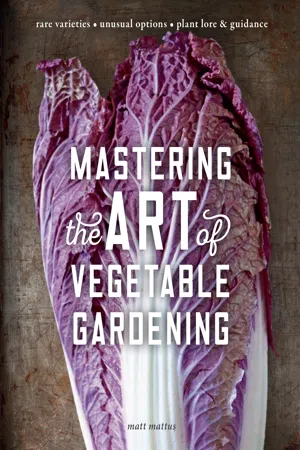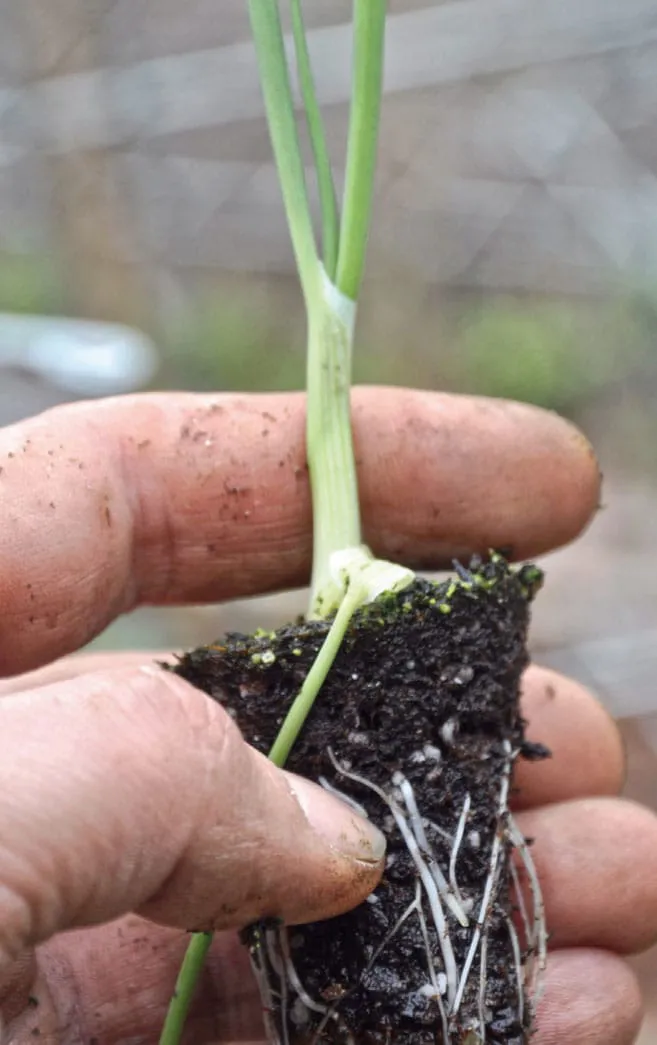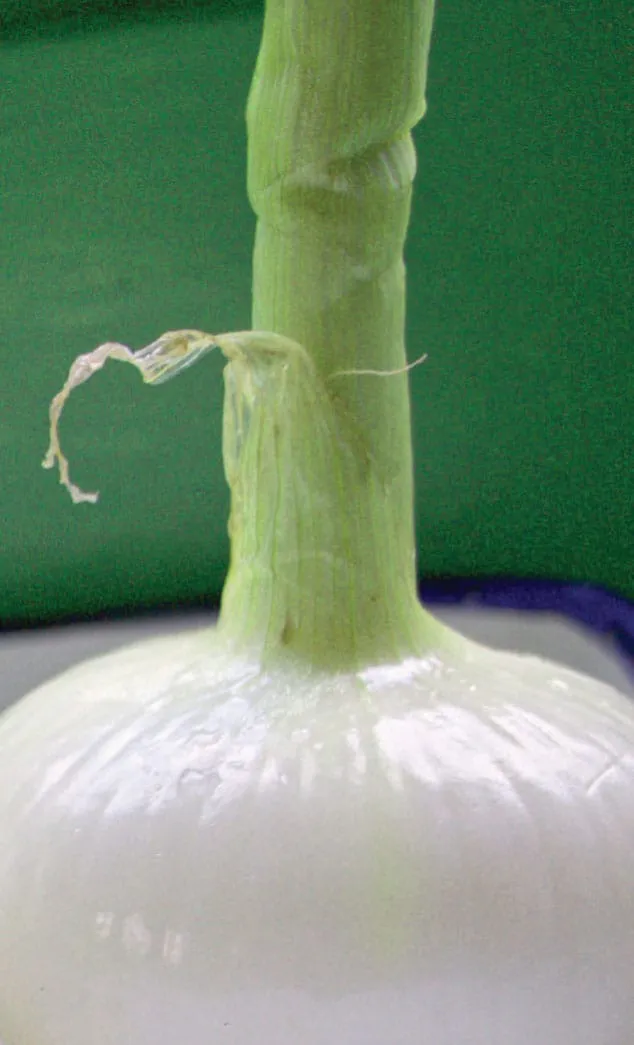1
ONIONS, LEEKS, AND GARLIC
Why are homegrown onions so often small and disappointing? Here’s how to grow impressive alliums (hint: the secret to onions is to grow them from seeds).
Onion crops usually disappoint. Garlic frequently does too. At least, that is what I have observed. The problem is almost always the same: most gardeners simply approach onions and garlic too minimally. Take onions, for example. We rake out a nice bed for them in the early spring, buy onion sets or onion plants, and then enjoy planting them in neat, meticulous rows—and that’s about the extent of it. A few weeks after planting all may appear fine, as the greens begin to grow and the garden starts to look like a proper vegetable garden. But it’s at this crucial point when things start to take a turn for the worse for the overlooked alliums. The onion bulbs just don’t seem to get any bigger. For their part, the garlic stalks usually look beautiful, but who knows what is going on underground. We weed, we cultivate, we sprinkle, but the onions never seem to get close to the size you see every day in any corner grocery store. It is a poorly kept secret that most homegrown onions are the size of golf balls when they are finally hoicked from the garden. Tasty, yes, but still underwhelming.
Here is the good news: onions and garlic are actually pretty easy. There is no hidden secret to outshining the alliums at your supermarket. All you need to do is make a couple of modifications to your growing strategy.
STORAGE ONIONS
The onion has a long history as a cultivated food plant, dating back as early as 5000 BC and going back even further into antiquity as a wild-collected edible. Although the wild version bears the botanical Latin name of Allium cepa, botanists find it hard to pinpoint where exactly this wild ancestor arose. Most scholars, however, trace cultivated onions to the Iranian peninsula and Iraq, Uzbekistan, and even out toward Mongolia. Onions fed the Egyptian pyramid builders and were included in many burial rituals and tomb paintings. They were even considered sacred by the Egyptians, who believed that the onion had a soul. Columbus brought the onion to the New World around 1492. It quickly spread as a cultivated plant through various indigenous North American tribes, particularly with the Iroquois, who were cultivating onions in what is now New York State in the seventeenth century.
Onions typically are one of the first seed crops planted in midwinter. Seed-raising onions is the preferred method if you want to approach onions seriously. Exhibition growers (who raise onions for state fairs or horticultural exhibitions) all raise their onions from seed.
Home gardeners interested in raising exhibition-type onions are faced with a decision straight out of the gate in midwinter when the seed catalogs arrive. Should you grow your onion crop from seed, from onion sets, or from onion plants? Below you’ll find some very straightforward pros and cons for each of these methods.
Onions must be cured or air-dried for a few days before storing.
SEED, SETS, OR PLANTS?
Sets and onion plants often are viewed as easier options, and indeed they are for many home growers. While convenience may be a good reason to use this method, most gardeners will also admit that much of their crop gets harvested on an ongoing basis. So, if it’s not your intention to grow onions as storage crops, and you don’t mind eating smaller onions, plants or sets may suit your needs just fine.
However, if you want your onions to look like those pictured in seed catalogs, that’s another story. If achieving picture-perfect results is your goal, consider not only the method you choose to generate plants (starting from seed is recommended), but also the variety of onion you choose to grow—there are several classes.
SHORT-DAY VERSUS LONG-DAY
Onions can be divided into two groups. Think of short-day onions as sweet onions with a limited shelf life, and think of long-day onions as storage onions with a hotter flavor. Cooks are familiar with these definitions, as the two groups of onions are used for different purposes in the kitchen. The ‘Vidalia’ types or “sweet onions” can be eaten like apples. They have a higher water content, are less flavorful, and often are used raw in salads. They have a limited season, however, and are not good keepers.
Onions require heavy fertility and plenty of water to grow large.
Cell-raised onion seedling ready to plant.
‘Bianca di Maggio’ is an uncommon Italian heirloom cipollini onion.
But let’s say that your garden is in a cold climate, and you want to raise sweet onions like the ‘Walla Walla Sweets’ or the ‘Vidalia’ types. These short-day onions are specially bred for growing in warm climates as a winter crop, so even though you can find seeds or seedlings of these varieties for northern gardens, they are not recommended if you expect to get a market-type product. If you plant these varieties in a cold climate, you will still get harvestable onions, but they will be smaller and hotter than you might expect.
What is the actual difference between short-day and long-day onions? Part of it is purely chemical, and part of it is physiological, defined by day length and air temperature. For example, sweet onions raised in soils low in sulfur or calcium are often hotter, whereas warm growing conditions paired with long summer day length will result in a completely different product. Sweet onions are primarily intended for those raising winter crops in the warmer parts of the planet. The variety names provide hints as to their ideal growing region. A ‘Walla Walla Sweet’ must then come from Washington State in a region near Walla Walla. The same clues are provided by the famed ‘Vidalia’ onion, and the ‘Georgia Sweet’, ‘Texas Sweet’, and ‘Maui Sweet’ onions.
NOTE: You will find many sweet onion varieties sold in seed catalogs as bundles of pre-started plants available even to northern gardeners. These were raised in a previous season, as with onion sets, and then carefully stored. The trick is to know what you are buying and recognize how appropriate the variety is for your area. Long-day and short-day onions require different growing conditions. Long-day (or storage onions) need 14 or more hours of sunlight per day. Short-day varieties grow best in mild climates where the days are short (areas below the 35th parallel), and these varieties cannot tolerate hard freezes.
RAISING ONIONS FROM SEED
The finest onion crops are raised from seed. The process is rather low-maintenance if the seeds are grown under lights or on a heating mat on a porch. The trick...





